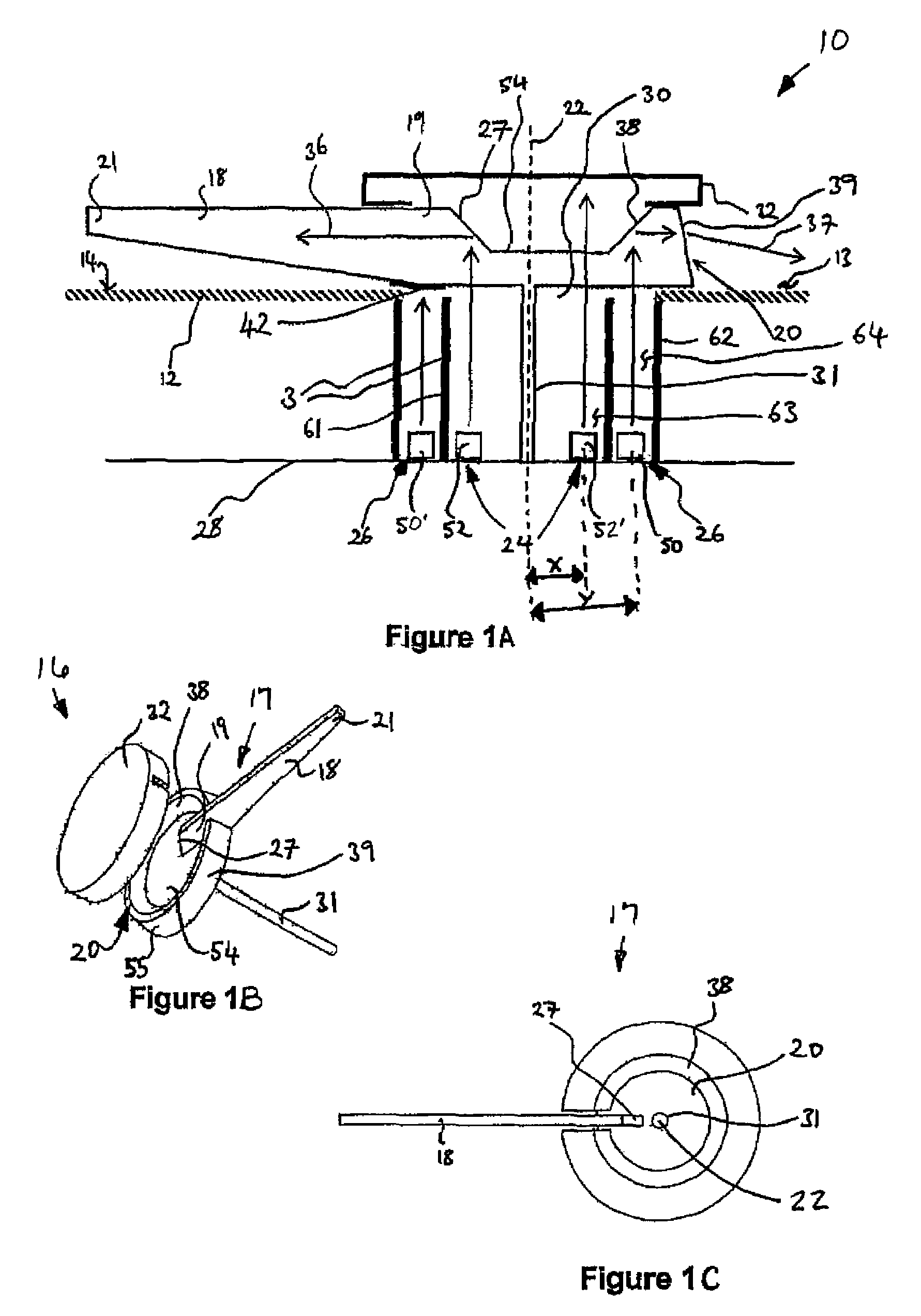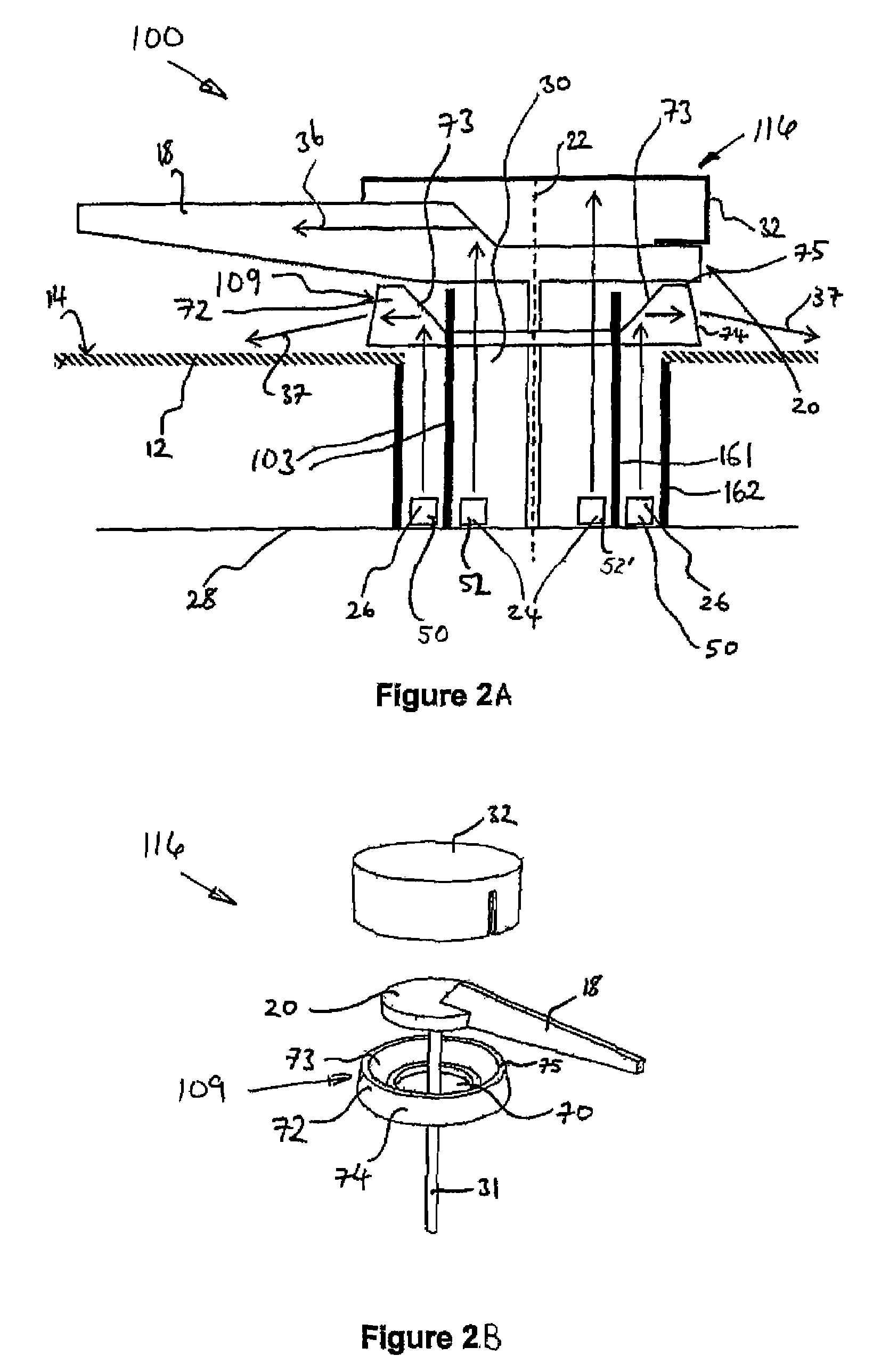Illumination of vehicle instrument
a vehicle instrument and illumination technology, applied in the direction of instruments, measurement device, measurement apparatus components, etc., can solve the problems of reducing the aesthetic appeal of the instrument, requiring more complex arrangement of the pointer, and reducing the cost savings of such simplified designs, so as to achieve small area, improve aesthetics, and improve the effect of illumination
- Summary
- Abstract
- Description
- Claims
- Application Information
AI Technical Summary
Benefits of technology
Problems solved by technology
Method used
Image
Examples
first embodiment
[0034]Referring now to FIG. 1A, seen therein is a diagrammatic cross-section through part of an instrument according to the present invention. The instrument 10 comprises a dial 12 having an information bearing front surface 14, which may include numbers and other marks (not shown). The instrument 10 also includes a pointer assembly 16 (shown in isolation in FIG. 1B) comprising a pointer 17 having a pointer hub 20 and a needle 18, a spindle 31 and a light absorbing cap 32. The pointer hub 20 is substantially circular, and the needle 18 extends radially from the hub 20. The needle 18 and hub 20 are mounted in front of the dial 12 on the viewing side 13 of the information bearing surface 14. The spindle 31 extends centrally from the underside of the hub 20 and extends perpendicular to the plane of the dial 12. The needle 18 is able to pivot or rotate about a first axis (indicated by the dotted line 22) which is perpendicular to the plane of the dial 22 and coincident or coaxial with t...
second embodiment
[0048]In this second embodiment, the deflection element 109 is generally located between the pointer 18 and the dial 12. The radius of the deflection element 109 is larger than the radius of the aperture 30 in the dial 12 to prevent the deflection element 9 from falling through the aperture 30. The light absorbing cap 32 is located over the pointer hub 20 obscure the light sources 24, 26 from view.
[0049]The light deflecting walls 103 in the second embodiment are arranged slightly differently to those in the first embodiment shown in FIG. 1. In the second embodiment, the first tube 161 is longer than the second tube 162, and extends through the aperture 30 in the dial 12 and through the central hole 70 in the deflecting element 9. The first tube 61 extends to a height substantially equal to the top 75 of the circumferential wall 72 of the deflection element 109, and the pointer hub 20 sits on top of the first tube 161 and deflection element 109.
[0050]The separate deflection element 1...
PUM
 Login to View More
Login to View More Abstract
Description
Claims
Application Information
 Login to View More
Login to View More - R&D
- Intellectual Property
- Life Sciences
- Materials
- Tech Scout
- Unparalleled Data Quality
- Higher Quality Content
- 60% Fewer Hallucinations
Browse by: Latest US Patents, China's latest patents, Technical Efficacy Thesaurus, Application Domain, Technology Topic, Popular Technical Reports.
© 2025 PatSnap. All rights reserved.Legal|Privacy policy|Modern Slavery Act Transparency Statement|Sitemap|About US| Contact US: help@patsnap.com



